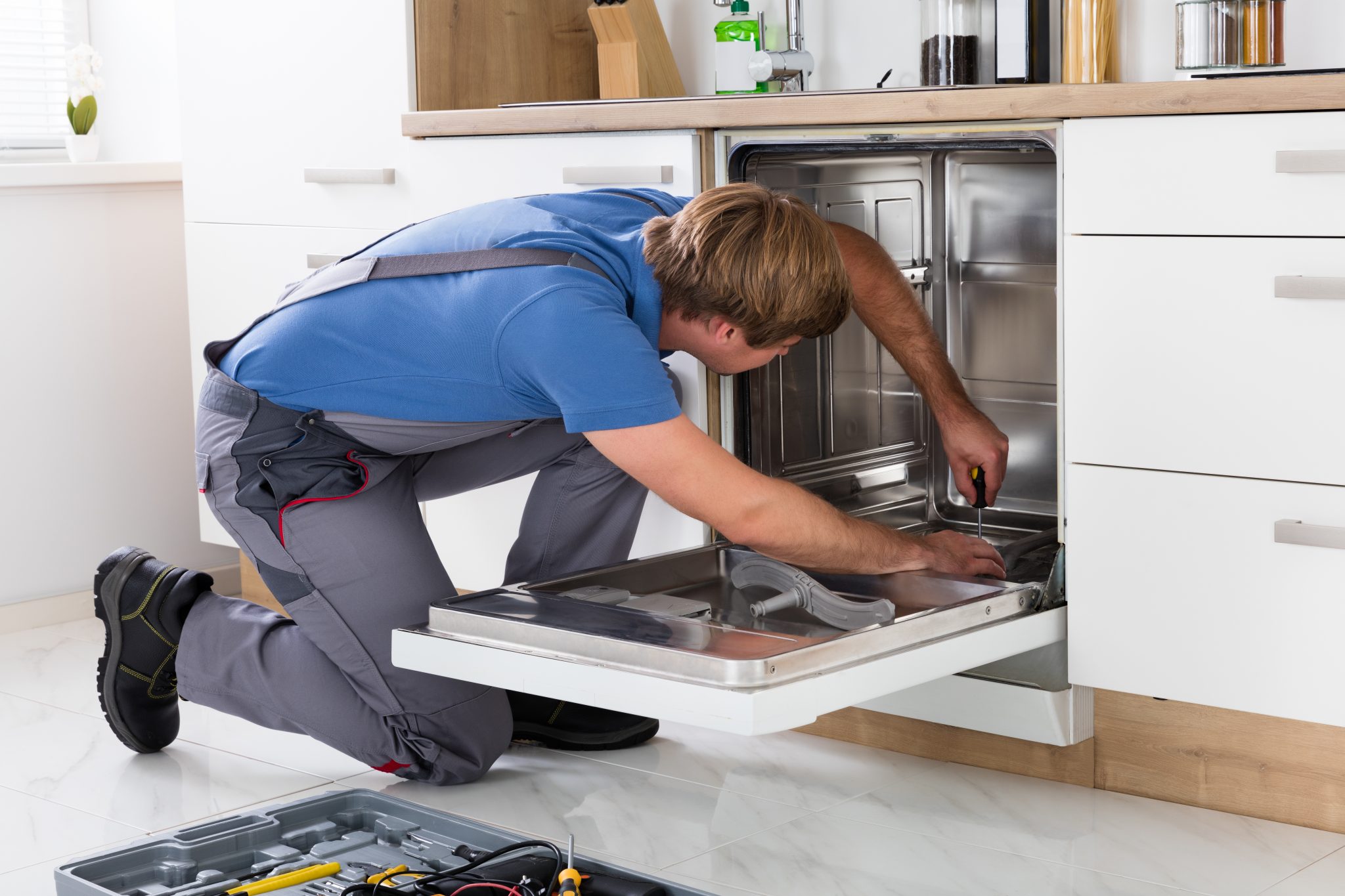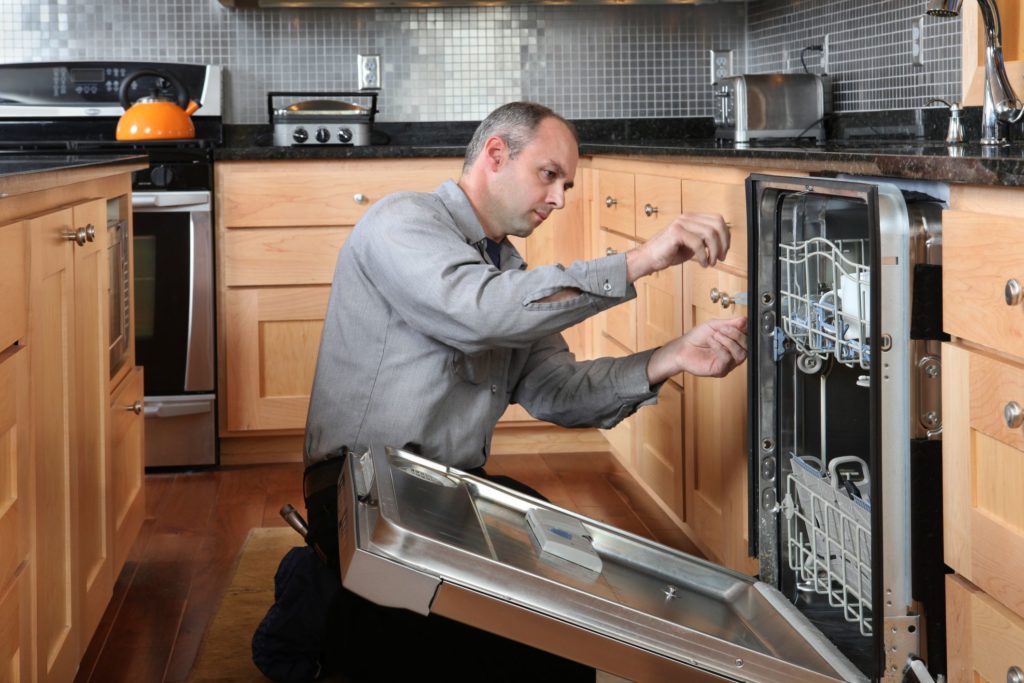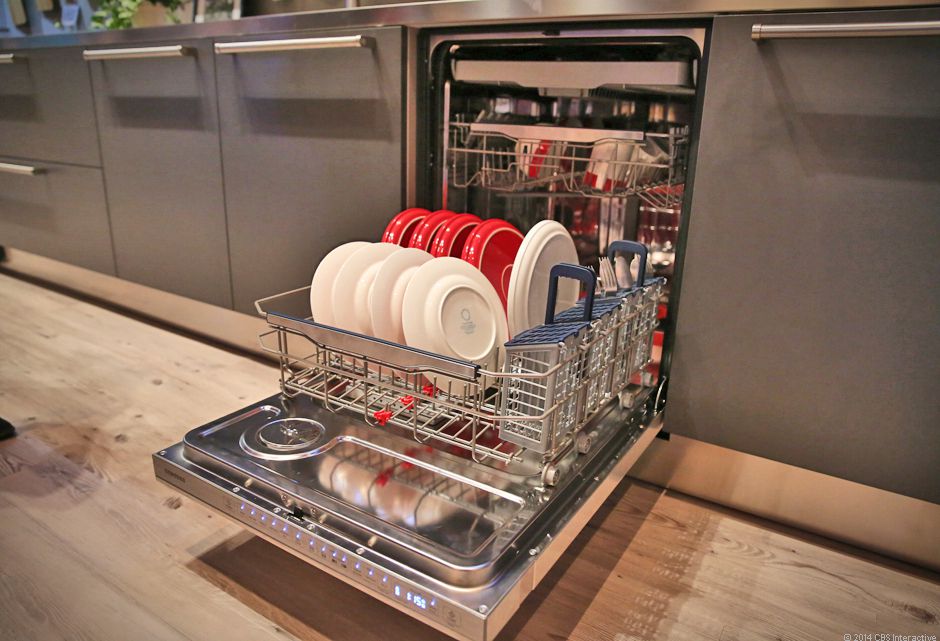How to Fix a Dishwasher That Is Not Draining

One of the common problems of a dishwasher is not draining. There are a number of reasons a dishwasher fails to drain. But not all the reasons need a Dishwasher Repair. There are some easy processes to solve the problem and you can easily perform them. Follow the steps I have shared here and you can easily solve the problem.
Step One – Check for Clogs
Before you take apart your dishwasher you should look inside your garbage disposal and see if the pipe is clogged. Now there is a little hole inside. It’s Kind of nasty. Or you can unscrew the pipe that is attached to it under your sink. Now that pipe leads to your dishwasher. If that is clogged with food or clogged with something then the water is not going to be able to leave your dishwasher and it is going to sit in there. Or it could be just restricted. That could be a problem too, so make sure that pipe is clean. Also, check your p-trap has nothing stuck in there. You will know if your sink is not draining very well. So that will be a sign.
Step Two – Check the Door Latch
So if there are no clogs then you can start taking apart your dishwasher. Take out the racks. The top rack is going to be held in with a clip. So you have to push in a little lever on the inside, lift it up and out. There is a clip on the left and on the right. After you remove the clips the top rack should slide right out. And while you are here you might want to look at the screws around your door. These things come loose it can stop your door from closing all the way. Also, if you have a hole in the gasket around your dishwasher it can leak. So if your dishwasher is leaking on the floor by the door that might be the problem.
Step Three – Check the Operating Components
Before you take out any screws, lay a cloth down so that they don’t drop down inside. It can be really annoying, and it happens all the time. There is a screw in the back and the top. The lower sprayer comes out by unscrewing the part in the middle. It pops right off. You can use a T-15 bit to take out the four screws. The plug should come right out and you should be able to lift out the filter. And underneath that, you may see a label is floating around. This is often happening. There are labels and sticker on person plates, especially the small ones. They can come off and jam parts inside causing the problem.

Step Four – Check Your Garbage Disposal Drain Plug
If the labels and plates are ok then there is a cover that you can take off. It will be held on with one screw. Then you can see the blade and the screen. On the bottom of the cover, there is more paper and plastic rammed in corners. Check them out and clear it out. You want to make sure that all the parts that you put back in have been cleaned. Spin the blade and make sure that it moves. It’s going to be a little stiff but it should be able to spin without it feeling like you are going to break anything.
Step Five – Check the Underside
If there is no problem in step four, hopefully, you can find the obvious problem here. On the back of the filter; pop it off and clean out the underside. There might be crud that gets stuck and slows down the water so that your dishwasher is not cleaning as effectively. Then place the cover back on. Then put the filter back on and before you tighten all the screws, put them in one at a time.
Step Six – Check the Plug
Hopefully cleaning and clearing it out fixed your problem. Before you put the plug back on the clear ring, put it in the arm, and insert the Arm and give it a turn. And it should lock in place. Then put in the back screw and the top screw.

Conclusion
This usually fixes most dishwashers with a draining problem. It’s just something is down there inside and the blade can’t grind it up. It’s just stuck, and the water is not going to leave if it’s all clogged. Once you have cleared it out, hopefully, it works. If it doesn’t you may have a pump problem or a pump failure in which case you would need to call an Appliance repairer.